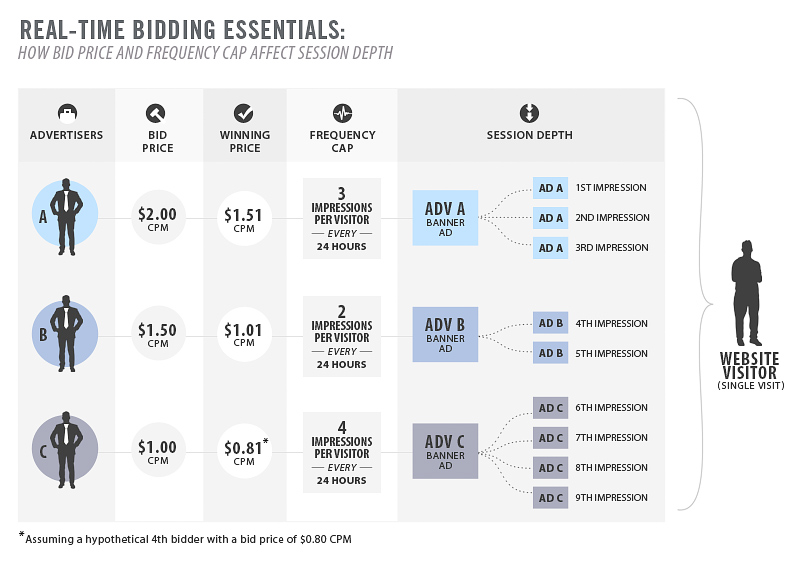Second Price Auction Model (Dynamic Bidding)
Choozle operates on the second-price auction model. A Second Price auction means the highest bidder pays the price bid by the second-highest bidder. This is the same way that Google Adwords works. The Second Price Auction Model enables Choozle to efficiently target audiences at the lowest possible bid price. Also known as dynamic bidding, the Second Price Auction model commences when an Internet user requests a specific web page. Before the web page is loaded, a bid request from the publisher of the web page is sent to an ad exchange. The bid request also contains data linked to the requesting user’s IP address. This data can include the user’s demographic, browsing behavior, location, and other information.
Advertisers partnered with the ad exchange are automatically notified of both the bid request and the user’s information through their demand side platform. Advertisers can use the information from the bid request to decide if they want to target the user. If they do want to target the user, advertisers will automatically start bidding on the website impression that the user will visit. The bid process happens in a matter of milliseconds. The advertiser with the highest bid wins the auction and will serve the ad impression.
In a traditional fixed auction setting, the highest bid price offered will be the price paid to win the auction. In the Second Price Auction Model, however, the winning bidder will only pay $0.01 more than the second-highest bid, regardless of the bid offered. For instance, if the highest bid on an ad impression is $2.00 and the second highest bid is $1.50, the $2.00 bid will win the impression but the bidder will only pay $1.51 for it. The extra $0.01 is used to differentiate the highest bid from the second highest bid. This process is repeated for every impression that is served on the webpage that the user will view and occurs in milliseconds.
The Second Price Auction Model enables advertisers to attain the best possible price for their desired impressions and occurs in real time. It eliminates ad waste and enables advertisers to make the most out their served impressions. For both publishers and advertisers, the second price auction model remains the fairest and most efficient way to bid on digital impressions.

